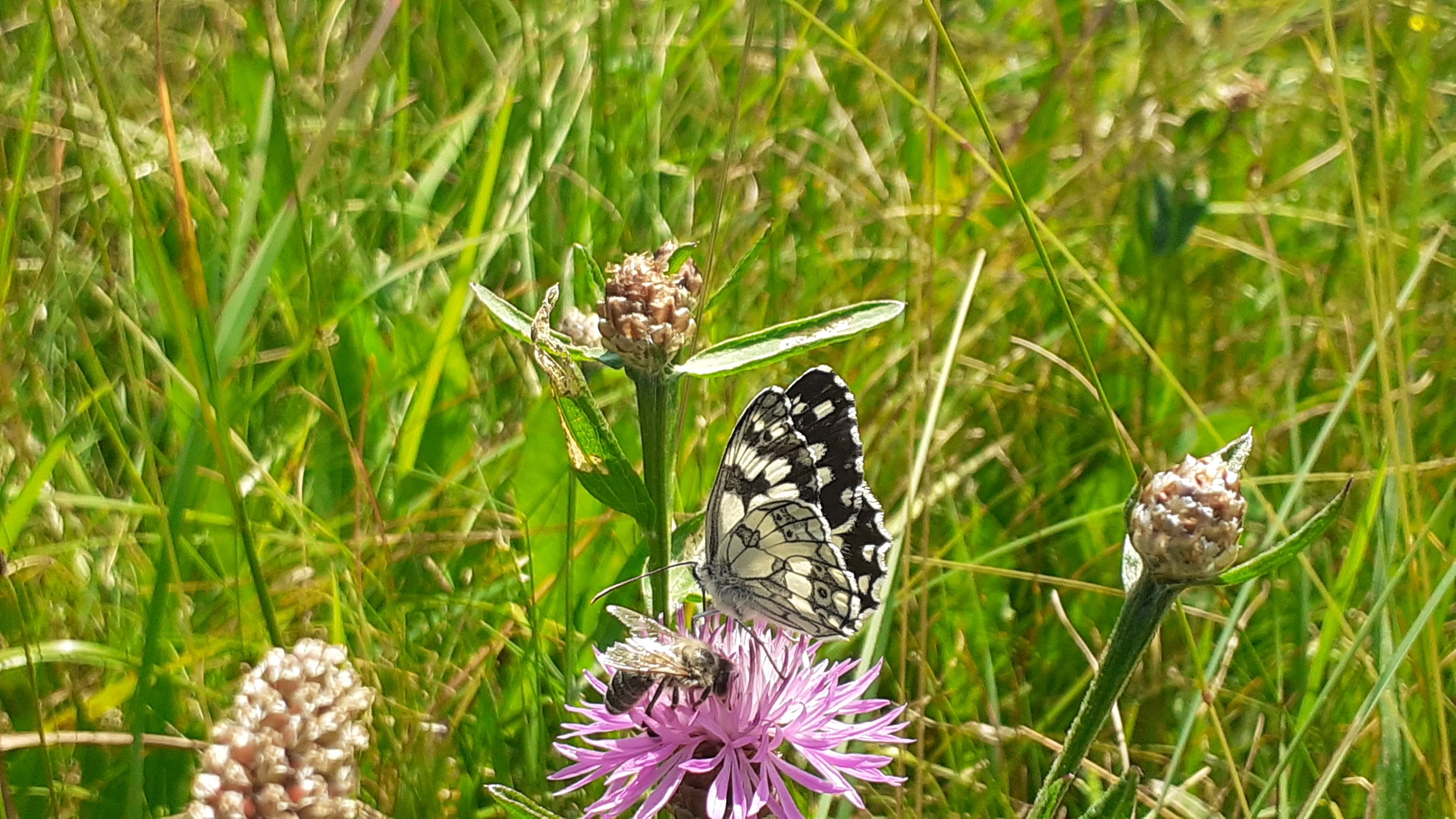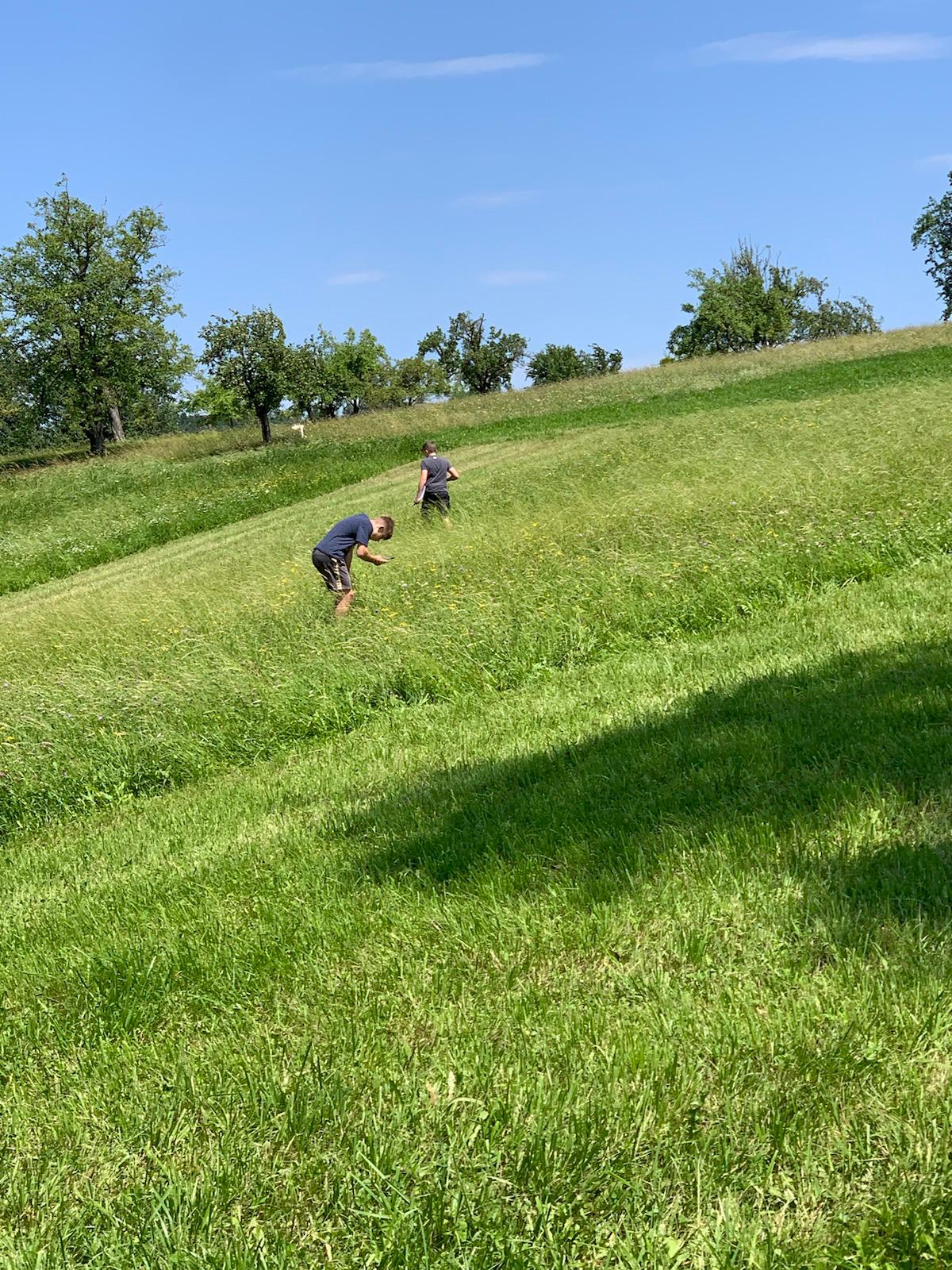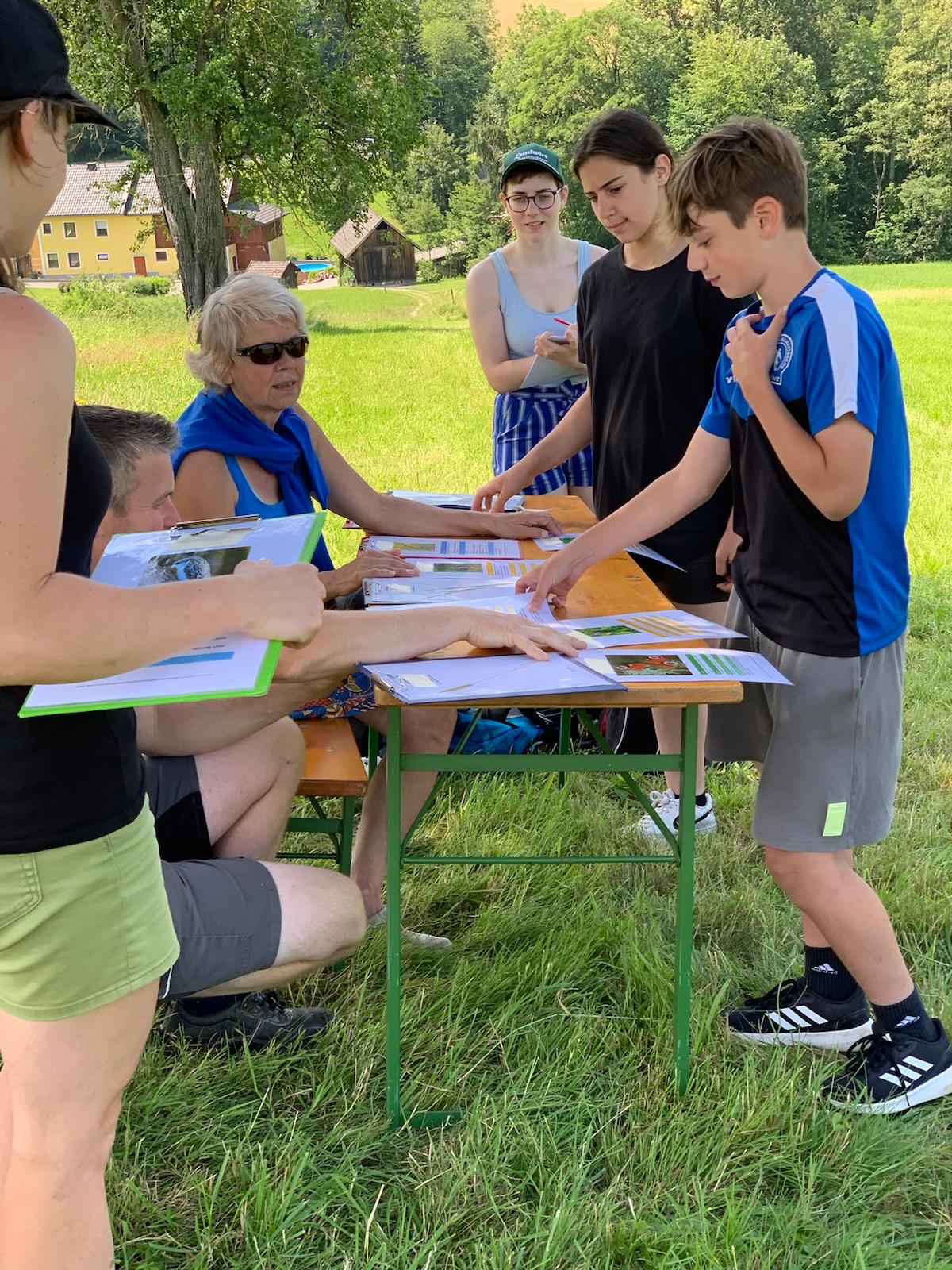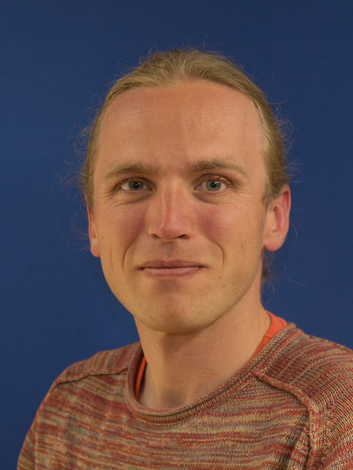the students of the 3rd grade NMS Allhartsberg had the opportunity behind the scenes of the Schuller family's organic farm . After a tour of the farm by the Schuller family, the students were able to visit the farm's species-rich extensive meadows.
Daniela Ablinger, Farmer Cluster Facilitator and project employee at the HBLFA Raumberg-Gumpenstein Bio-Institute, developed a varied program on the topic of biodiversity . With a quiz and various games, the students were able to learn about the concepts of biodiversity, ecosystem services and habitats . Topics such as which indicator plants and habitats exist locally, what makes the orchard so special and what tasks the nodule bacteria fulfill were also addressed.

Figure 1: Bee and checkered butterfly on meadow knapweed. Photo: Daniela Ablinger
Of course, the fun wasn't neglected either. The students were able to take on the role of researchers themselves and get to know the grassland species better during a scavenger hunt. To do this, animal and plant species had to be identified using the i-Naturalist app - the fastest group won the scavenger hunt.

Figure 2: The students in the meadow identifying species using the i-Naturalist app. Photo: Angelika Aichberger
Finally, the young participants' memory was put to the test again. The class was divided into two teams that competed against each other. The animal and plant species had to be found as quickly as possible using profiles. The faster group received the point and the group with the most points won.

Figure 3: Species identification of the profiles. Photo: Angelika Aichberger
It was a very interesting and exciting morning. The aim was to bring the local biodiversity closer to the students and perhaps arouse some people's enthusiasm for nature.







